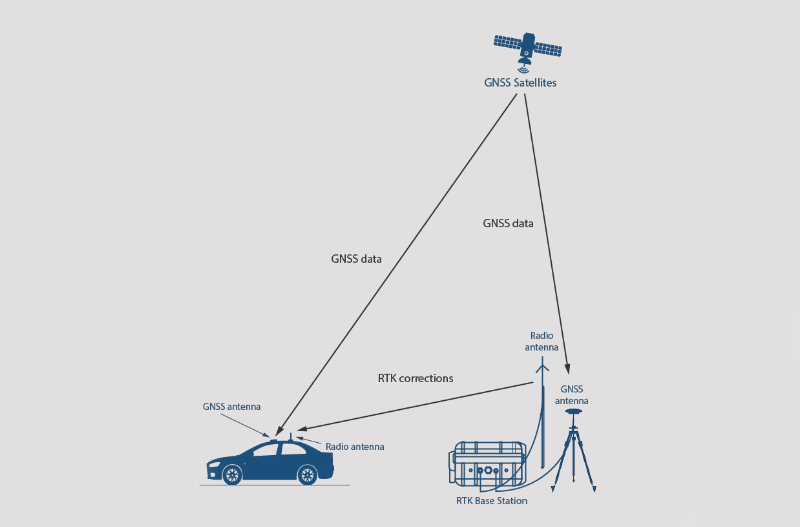RACELOGIC RTK BASE STATION
The DGNSS RTK base station improves the positional accuracy of VBOX units and other compatible GNSS systems by calculating and transmitting differential correction data.
|
|
KEY FEATURES
The VBOX Base Station features a survey grade multi-band receiver with GNSSL1/L2/L1C/L2C, GLONASS L1/L2, Galileo E1/E5a/E5b, and BeiDou B1/B2. Depending on the type of rover unit used, position accuracies of up to 2 cm can be achieved. VBOX accuracy (RMS): Horizontal: 5 mm + 0.5 ppm x baseline; Vertical: 10 mm - 0.8 ppm x baseline The optional integral or mast mount radio transmitters have a range of up to 10 km (approx. 6.2 miles) line of sight and 2 km in built-up areas. |
The differential correction message can be broadcasted in RTCM v2, RTCM v3, RTCM v3.2 MSM4, RTCM v3.2 MSM7, or proprietary RTK formats using an internal or mast mounted radio modem transmitter. You can store and recall up to 25 different reference locations. Power can be obtained either from the internal battery or from an external source via a front panel. The battery life is up to 18 hrs, depending on radios in use. The base station works with a variety of different radios to suit your country and range requirements. Please see the radio range available from RACELOGIC. |
HOW DOES IT WORK?
By utilising corrections from a fixed base station, the GNSS engine can fix the position of the antenna very accurately. The technique involves the measurement of the carrier phase of the satellite signal, which is then subject to some sophisticated statistical methods to align the phase of these signals to eliminate the majority of normal GNSS type errors.
This alignment process goes through three phases: acquisition, ambiguity ‘Float’ mode and ambiguity ‘Fixed’ mode. Accuracies in Float mode are in the region of 0.75-0.2 m and 0.01-0.02 m in fixed mode. The correction signal is normally sent out at intervals of 1 second, but can be increased if needed in order to reduce the required data rate.
The VBOX RTK Base Station can be used to improve the positional accuracy of VBOX GNSS systems, by calculating and then transmitting differential correction data via radio to allow the roving GNSS system to correct its position. Because a single base station can be used simultaneously by all the receivers in range, fixed based stations are ideal for proving grounds or test tracks, where you are testing in a confined area of up to 10 kilometres radius.

Technical Specifications
Temperature
-40°C to +50°C 0°C to +45°C 10°C to +50°C |
Power
Up to 18hr (depending on radios) 8-30 Volts Operating and charging @19 V: 2.25 Amps Operating and not charging @19 V: <0.5 Amps |
95% Circle Error Probable (CEP)
|
Radio Modems (more info here)
|
Memory
|

